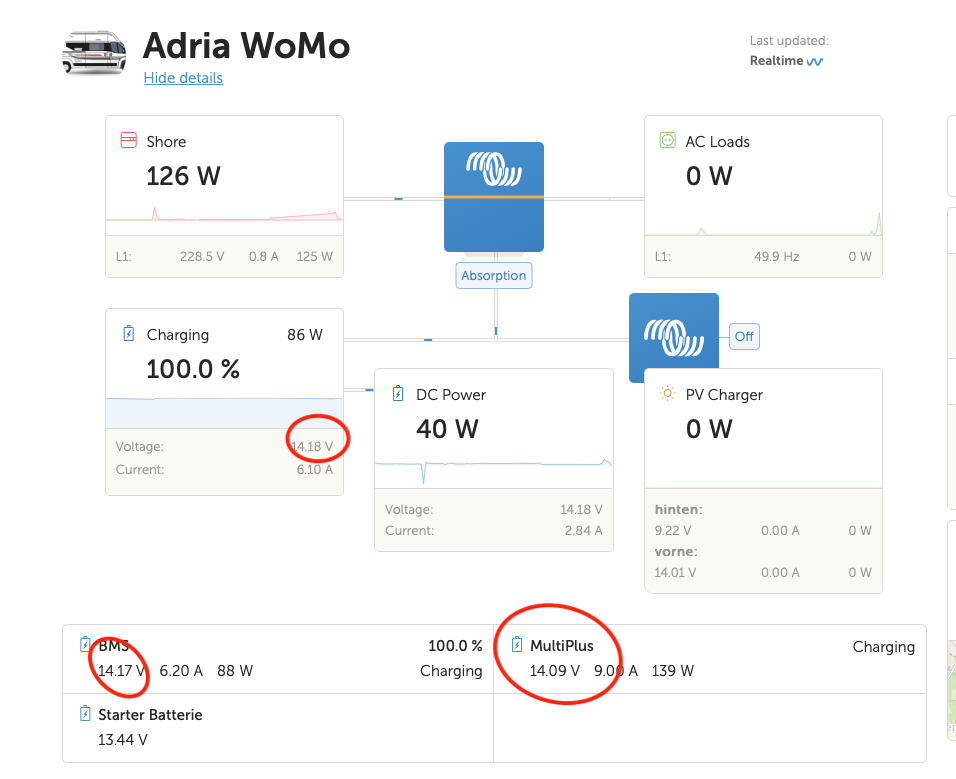i have a Multiplus 12/3000-16, BMV-712, 75/15 ( 3x), Venos OS, all FW up to date,
The Multiplus absorption and float voltage alway 0.1-0.2V too low ore too high.
I try to use DVCC ( only ) shared Voltage & shared temp sensor. The voltage is more accurate, but the multiples don't want to leave absorption to float. As I understand it, if you activate "limit current" this is normal, but without it this shouldn't happen...

